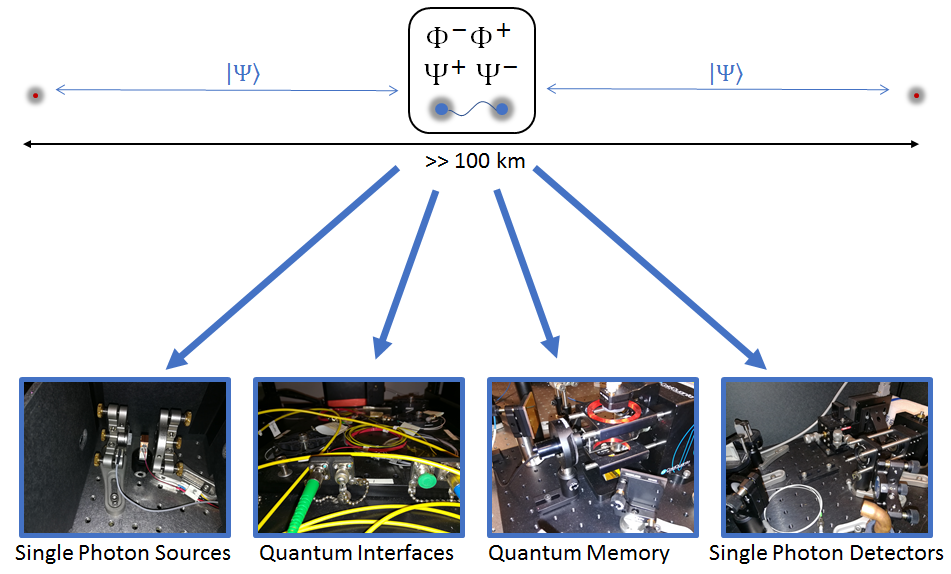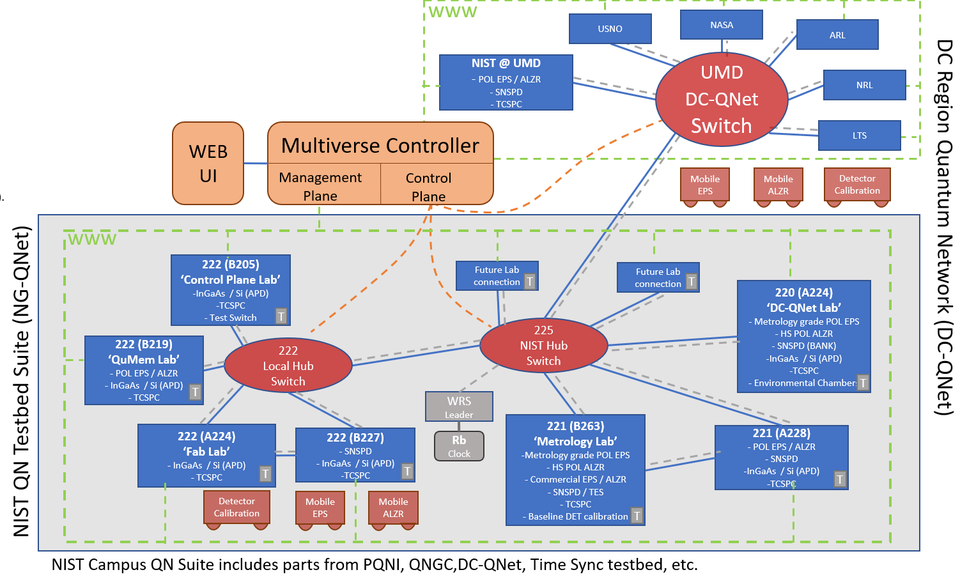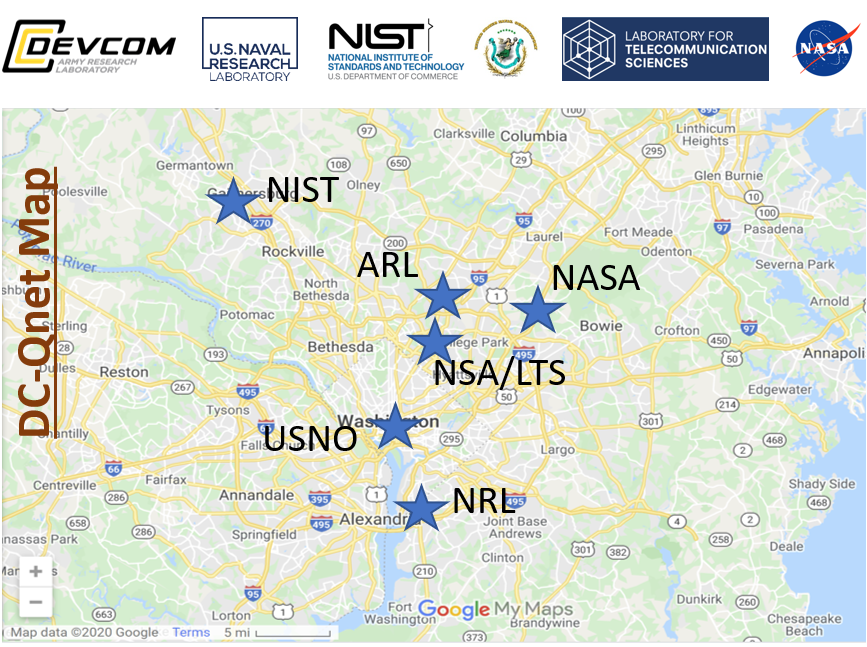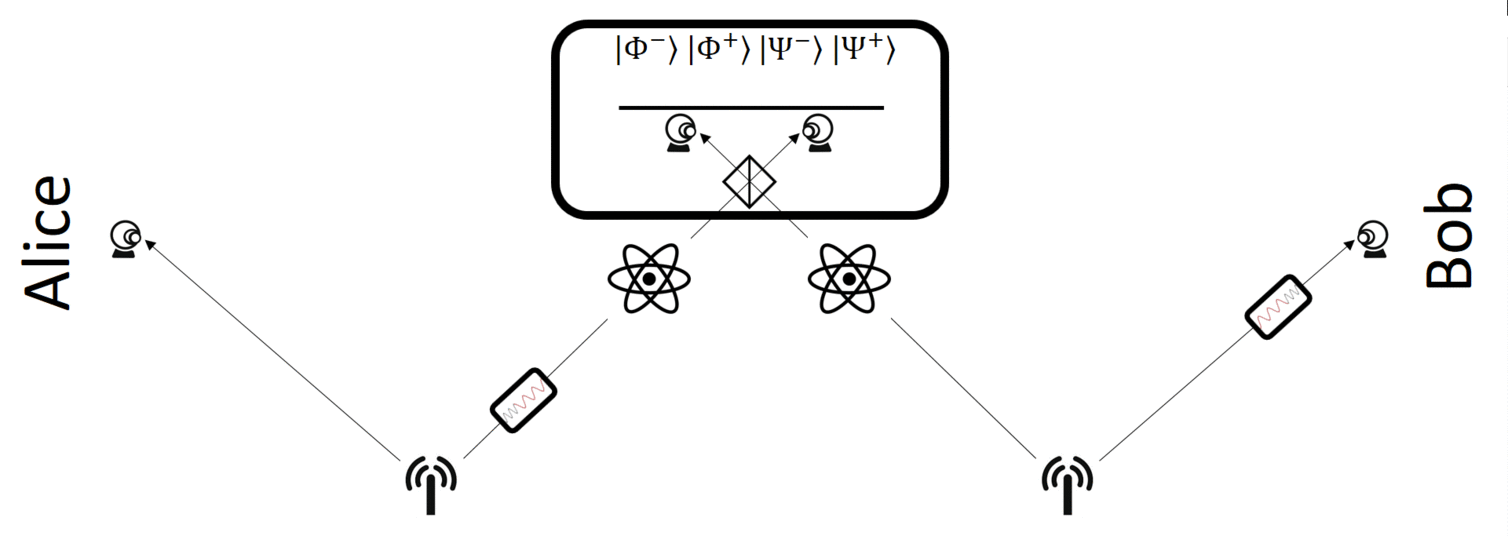Summary
The Quantum Communication and Networks Project develops quantum devices and studies them for use in quantum communications and networking applications. Our goal is to bridge the gap between fundamental quantum mechanics/information theory and their practical applications in information technology.
Our research covers two areas:
1. We perform research on the creation, transmission, transduction/interfacing, storage, processing and measurement of optical qubits – the quantum states of single photons. We build and study quantum devices, such as entangled-photon sources, single-photon detectors, optical quantum memory and quantum transduction/interfaces.
2. We are working toward implementing a quantum network testbed in which the suitability and performance of new and existing quantum devices and systems can be studied in a real-life network environment. The testbed will lead to the development of best-practices and protocols for quantum networks.
Description
Key Components of Quantum Repeaters and Quantum Network Systems
Single Photon Sources:
An ideal single photon entangled pair source for a quantum repeater application should satisfy several conditions simultaneously. Since photons must interact efficiently with a quantum memory, the source must emit photons that are spectrally very pure (have a very narrow linewidth) and are aligned to the narrow energy transitions of the atomic ensemble used in the quantum memory.
A quantum repeater for long distance transmission requires pairs of ‘non-degenerate’ photons in which one photon at an atomic wavelength is suitable for quantum memory and the other photon at a telecom wavelength is suitable for long distance transmission in optical fibers. Alternatively, the photons may be degenerate (same wavelength) but compatible with a conversion quantum Interface that can alter their wavelength while preserving their quantum statistical properties.
Quantum Memory:
In a quantum repeater scheme, photons arriving at a Bell state measurement device must interfere. This is a very technically challenging process for single photons since they must arrive at the exact same point on a beam-combiner at the exact same time. To achieve this, quantum memories can be used to store the quantum property of each photon until they are all available and ready, and then release the photons in a controlled way onto the beam-combiner for more efficient interference.
Our current research includes the implementation a quantum memory scheme called Electromagnetically Induced Transparency (EIT) in an ensemble of Cesium atoms, in which a laser control beam can turn ‘on’ or ‘off’ the storage of a single photon level signal.
Quantum Interface:
A quantum interface is needed when different photon characteristics are optimal for certain tasks such as long-distance transmission, efficient detection or different quantum computing technology. For example, photons at wavelengths that are suitable for long distance transmission in optical fibers are not optimal for easy and efficient detection. A quantum interface in this case can convert the photons from the telecommunications band for transmission to the near visible band for detection while preserving the quantum statistical properties of the photons. On the other hand, photon pairs generated at atomic resonance wavelengths may need to be converted to a telecommunications band for long distance transmission. As another example, different quantum computing technologies rely on different wavelength photons. Transferring qubit states from photons at one wavelength to the other is necessary for connecting or scaling quantum computers.

Emerging Technology and Fundamental Research
Silicon Carbide:
Recently, silicon carbide (SiC) has emerged as a promising material for integrated (compact, scalable) quantum devices including sources, interfaces and memories. SiC has well-established growth and device engineering processes that are compatible with the CMOS foundry and has favorable mechanical, electrical and nonlinear optical properties. This includes, uniquely, both high 2nd order and high 3rd order nonlinear coefficients making SiC compatible with a diverse range of nonlinear entangled photon source approaches (such as SPDC and FWM). In addition, the optical spin qubits of defects or impurities such as vanadium ions in SiC usefully operate at or near the telecom regime. These defect-based approaches can be potentially applied to many quantum devices including single photon sources, quantum memories and so on. This type of fundamental, forward-looking research represents a promising approach towards satisfying the need of the next-generation components for integrated high-fidelity quantum communication and networks.
Quantum Network Testbeds
NIST Gaithersburg Quantum Network (NG-QNet) Testbeds:
The NIST Gaithersburg Quantum Network (NG-QNet) is a suite of testbeds being built on the NIST Gaithersburg campus to implement and characterize various aspects of quantum networks. It is being developed collaboratively by the NIST ITL, CTL and PML laboratories. The NG-QNet includes the Platform for Quantum Network Innovation (PQNI), the Quantum Component Characterization Testbed, the Quantum Network Grand Challenge (QNGC), and the Quantum Network Time Synchronization Testbed. The testbeds of the NG-QNet will be used to develop and test quantum networking layers and control planes; develop best practices and protocols for classical/quantum co-existence; study of quantum edge-nodes/interfaces (physical and logical); study quantum device/network performance; study vulnerabilities (such as eavesdroppers) and robustness; implement accurate time synchronization across the quantum capable facilities on the NIST campus and will (as appropriate) incorporate complex quantum systems such as quantum repeaters. The NG-QNet will also include a dedicated facility to serve as the NIST node of the DC-QNet.

DC-QNet:
DC-QNet is a consortium of six DC-area federal agencies coming together to build a real-life regional quantum network (QN) testbed to advance cooperation among the agencies in QN research and development. It will be a non-proprietary environment for test and evaluation of QN concepts, components, protocols and architectures developed both within and beyond the member agencies. It will enable cross-cutting agency synergy in sensor development, secure communications, distributed computing and other use case applications. The DC-QNet was codified by an interagency MOU on May 18th, 2022. The six agencies are: Naval Research Laboratory (NRL), Army Research Laboratory (ARL), National Institute of Standards and Technology (NIST), Laboratory for Telecommunication Sciences (LTS), US Naval Observatory (USNO) and National Aeronautics and Space Administration (NASA). Associate members include Naval Information Warfare Center - Pacific (NIWC-Pacific, San Diego, CA) and Air Force Research Lab (AFRL, Rome, NY).

Quantum Network Metrology:
We are working to develop robust and versatile metrology tools and methods to characterize quantum network devices and to develop clear and consistent language describing the various performance properties of these components. And by working with the emerging quantum industry - these methods and best practices can form the basis of industry led standards.
By using NIST quantum network infrastructure and testbeds, this characterization will extend beyond testing individual components to include whole network links and entire networks. The results from this metrology can be used (ultimately in real-time) to optimize the transmission of photons around a network and help to create better quantum communications and quantum network management protocols.
Related Project: Non-Linear Optics for Quantum Information and Networking
Nonlinear optics offer ways to control and engineer the interconnects in a quantum network. In a hybrid quantum network where the quantum nodes operate at different wavelengths, interconnects such as quantum frequency converters or entangled photon pairs allow interfacing between the nodes. Both of these types of devices are based on nonlinear optical effects. We study applications of nonlinear optics to enable improvements to quantum networking, quantum-enhanced sensing and other aspects of quantum information. See related projects.
About us:
We perform research and development on quantum repeaters and supporting measurement technologies. Our mission is to bridge the gap between fundamental quantum research and practical information technology applications. Our research aims to promote US innovation, industrial competitiveness and enhance the nation's security. For more information, contact project leader Dr. Oliver Slattery. For more information concerning the ITL Quantum Information program, please select link 'ITL Quantum Information Program'.
Positions - accepting applications:
We are accepting applications for Postdoc and/or Guest Researcher experimental optics positions in the Quantum Communications Project. Candidates should have an interest in experimental optics and be motivated to perform research independently. For more information, please contact oliver.slattery [at] nist.gov (subject: Inquiry%20from%20Quantum%20Communication%20Project%20website) (Dr. Oliver Slattery.)
Click here for more publications.


